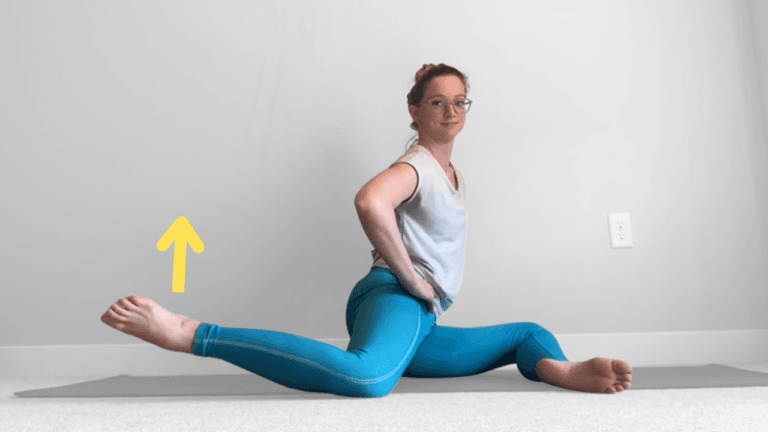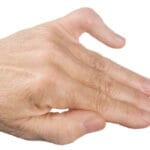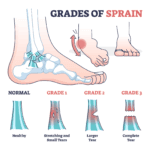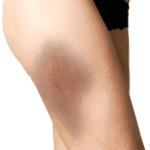This extreme stretch can help build hip mobility and address pain in your back, knees and feet
Do you feel like your hips get tighter and less flexible with every birthday? Well, you’re probably right. Research shows that your hips typically rotate a wee bit less every year, chipping away at your range of motion.
That’s not ideal for your hips, obviously, but it’s also setting you up for potential back pain and even aches in your knees, ankles and feet.
So, what can you do to keep your hips loose? Stretching is key — and few stretches can match the effectiveness of the 90/90 hip stretch when it comes to maintaining mobility in these critical joints.
Physical therapist Dawn Lorring, PT, explains how to do the 90/90 stretch and why it can be beneficial for some people.
What is the 90/90 hip stretch?
Since the 90/90 stretch leans toward the extreme when it comes to working your hip joints, it’s not for everyone. The stretch rotates your hips two different ways, creating an external rotation on one hip and an internal rotation on the other.
An external rotation is a somewhat common movement. It’s what happens when you twist your foot toward the center of your body. (Think of sitting cross-legged, with the ankle from one leg resting on the opposite leg’s thigh.)
Doing an internal rotation, however, doesn’t feel as natural — largely because it’s not done as much in day-to-day activities. In an internal hip rotation, your foot moves away from your body. This movement can be problematic for those with a hip impingement.
Focusing on external and internal hip rotation works a network of muscles that cover the full range of motion in your hips. “It’s really about mobility,” notes Lorring. “It’s about allowing those muscles to relax and try to lengthen.”
How to do the 90/90 stretch
The name of the stretch also amounts to an abbreviated guide as to how you’ll sit, with both knees at 90-degree angles. Here’s a step-by-step breakdown:
Start by sitting on the floor, ideally after warming up your muscles. (“You don’t want to do a stretch like this before readying those muscles,” advises Lorring.) Then let’s begin with your right leg.
- Position your right leg so it extends in front of your body, your outer thigh against the floor. This puts your hip in an external rotation.
- Bend your right knee at a 90-degree angle, so your calf is parallel to your torso. Your outer knee and outer calf should be resting on the floor.
- Keep your right foot relaxed and straight, toes pointing away.
Now for your left leg.
- It should extend off to your left side, with your inner thigh resting against the floor. As you might have guessed, this position puts your hip in an internal rotation.
- Bend your left knee at a 90-degree angle. This will leave your lower leg pointing straight back and away from your buttocks. Your inner knee and inner calf should be against the floor.
- Keep your left foot relaxed and straight. Your toes will point to the left.
With both legs in the proper position, let’s focus on your torso.
- Your goal is to hold your torso straight up with your shoulders square. Fight the tendency to lean to one side. “You want to make a nice vertical rectangle with your body,” says Lorring.
And with that, you’re set. “It might not sound like much, but it’s more than enough of a stretch for most people,” notes Lorring.
Hold this pose for 20 to 60 seconds then repeat with your right and left legs changing positions.
Muscles targeted by the 90/90 stretch
While in the 90/90 hip stretch, your front- and back-positioned legs target different muscles.
The outstretched front leg primarily works the back of your hip, or the buttock area, says Lorring. Target muscles include your:
- Gluteus maximus, the largest muscle in your body.
- Piriformis, which connects your spine to each thigh bone (femur) and helps your hips rotate.
Your back leg focuses primarily on your:
- Psoas muscle, a long muscle in your lower back that flexes your hip joint and lifts your upper leg toward your body (such as when you lift your leg while walking).
How the 90/90 stretch improves hip mobility
In today’s world, it’s commonplace to spend long hours sitting at a desk. That leaves your front hip muscles in a shortened position for much of the day, which can lead to stiffness within your joint.
“When those muscles aren’t getting stretched and moved around, they tighten up,” says Lorring. “That can put stress on your back and lead to problems down your legs in your knees and ankles.”
But when you stretch and lengthen those hip muscles, that tension eases up and makes it easier to move.
Variations of the 90/90 stretch
Settling into the 90/90 stretch may be difficult. If so, consider these modifications.
- Sit on a yoga block or pillow. “It lifts you up just a little bit so you don’t have to go as wide with the opening of the position or rotate the back hip and knee inward as much,” says Lorring.
- Put a support beneath your front knee. If your front knee won’t go flat to the floor, don’t force it down and stress your hip and knee joints. You can still benefit from the stretch with the use of a prop.
At a more advanced level, some may add a forward torso tilt into the stretch. The key with that move is to fold at your hip joint while keeping your back straight, as if taking a bow. Avoid rounding your spine.
Who should avoid the 90/90 stretch?
Given the aggressiveness of the 90/90 hip stretch, it’s not recommended for anyone who’s dealing with a hip impingement or has had a hip or knee replacement. People with knee issues — including a meniscus tear or arthritis — also may want to find other stretches that can bring similar benefits with less strain.
And if you’re having pain or a pinching feeling during the stretch or discomfort that lingers afterward, stop doing the stretch and seek out some advice,” cautions Lorring. Don’t be discouraged, though. This is an aggressive stretch, and there are other options.





